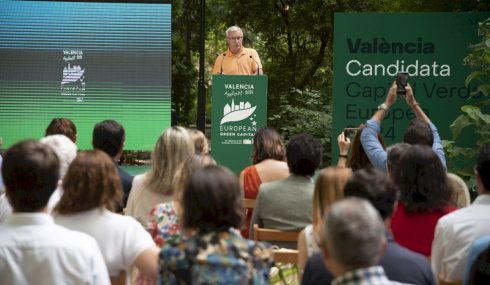
Contrary to popular belief, curiosity did not kill the cat.
Curiosity is one of the healthiest and most productive instincts in human nature. You can get into trouble if you stick your nose where it does not belong. But this passion for learning more will carry you far when it comes to studies and academia.
If you were to look up the web traffic of Tampa Bay Times, it would become evident that more and more students are choosing to outsource their research when it comes to homework. Many of them are shortchanging themselves.
Sure, for the moment, you can buy an essay and get rid of the hassle. But you also cheat yourself out of researching the subject and knowing it by heart. The best website to buy college papers can create dependency, as the buyer gets used to not writing his work.
Let’s take a look at how to foster and nurture curiosity and learning in students of all ages:
1. Presentation is key
Did you ever wonder why kids can memorize entire albums’ worth of lyrics, or know every minor noble house in Game of Thrones, but struggle to memorize even a page from a school textbook?
The answer is obvious: music, comic books, and TV shows are more interesting. A cynic may answer: “Sure, but those are easy to remember because they are vulgar and action-packed”.
To some extent that is true, but not entirely.
I distinctly remember being bored to death in history class. Then, after getting home, I saw a documentary on the very same historical event, and it fascinated me.
The problem was not that the event itself was not interesting. It was that the school lesson was dry, poorly presented, and uninteresting.
My curiosity to learn was triggered immediately when someone (in this case the documentary crew) put some effort into making it interesting.
And this is not an issue of budget. Sure, it was more engaging to see actors dressed as ancient Romans, but that was not the main draw. They presented it as a narrative.
Humans think in stories
Teachers, scientists, intellectuals, and other eggheads do not understand us, regular people. This is why statistics are often used but rarely understood in public discourse.
Most people view their lives as a story. Even nations present their creation as a story, complete with villains, challenges, and triumphs. Americans escaped a tyrant king, Rome was founded by two brothers nursed by a wolf, China is the MIddle Kingdom…and so on. Stories drive the world.
Most of us see ourselves as the main character in a narrative saga.
Reality is much more complex than that. It is filled with chaotic and random elements, and we just trim those elements out from the public perception. As a result, showing someone a spreadsheet, a list of names, or a table of chemical elements is uninspiring and uninteresting.
Random clumps of data will always fail to capture the imagination. Documentary makers and propagandists understand this, and they give people a story. They build up a narrative, framing the subject in question as the conclusion to a long and important struggle.
Even TV commercials understand what most teachers cannot. In less than a minute, a commercial establishes a small struggle, something to gain, something to lose, and the product as the ultimate solution. In other words, it is a self-contained, dense, story.
Propaganda is usually considered bad, but in fact, it is a neutral term. Teachers need to stop expecting kids to be drawn to excel spreadsheets, graphs, or equations, just because they are true and useful.
Teachers and the people who run education need to think like propagandists. Or, like corporations call them: “advertising agents”.
2. A personal touch
What is the difference between a tutor and a teacher?
Well, they both teach. But the tutor spends one-on-one time with the child, while the teacher has to manage 30 kids at once.
From any type of measurable performance indicator, the results of tutor’s dwarf those of school teachers. Even parents who choose to homeschool produce better results. This is not the fault of the teachers themselves, it is just an inherent flaw of resource distribution.
If you attempt to mass-produce something and turn it into an assembly line the quality will always suffer. This is true for shoes, and furniture, but also for school children. Overall, we have no choice. There is no other way for a nation to educate tens of millions of kids.
Mediocrity kills curiosity
The realization is profound: education is mediocre by design. The fact that lessons are boring is a feature, not a bug. This is the price you pay for having to standardize everything.
As a teacher, these mediocre manuals are your starting point. Yet, that is not an excuse to stop trying.
Even though the subjects and books are bland, you still have some creative control over the process. Engaging curiosity is as much of an art form, as it is a science.
Try to know your students and their preferences. Give examples that are relevant to them, tailor arguments to their level, and in general, try to meet them where they are.
Involve the students
Sitting down, shutting up, and listening is one of the worst ways to learn. Sure, if the subject interests you or you are naturally more intellectually inclined, you can learn from lectures.
But for most people, that is the worst way. To put things in plain English, your brain does not perceive your teacher’s monologue as something important. It is something that is happening to you, not something that you are doing.
In fact, as soon as students start writing down, the memorization rate doubles. Why? Well, you are doing something, and your brain shifts priorities. This is an activity in which you are actively participating.
If teachers just talk, the students won’t remember much. They have to make an effort to involve the students. Questions like “can you walk me through what I just said”, or, “how did we get here again”, will jolt students out of that passivity, forcing them to think.
Assure them that this is not an ambush, just that you want to make sure that they understood. Ask questions, repeat them, and change things around. Try to involve the student as much as possible, even if it wastes time.
Conclusion
Learning, like many other areas of human activity, is highly idealized and politicized. It is not like people do not understand how to stimulate curiosity and learning. The private sector has on-call psychologists and propagandists on hand. They can make toothpicks and paint seem interesting if the need is there.
Education is severely outdated. Amateur YouTube channels can do better than most teachers. The response isn’t to make things easier, coddle, pander, or sink money into the problem.
Lesson plans need to take into account human nature, and how people learn. Artists have perfected the art of making words and sounds seem interesting for thousands of years. Maybe they can give us a few pointers.









